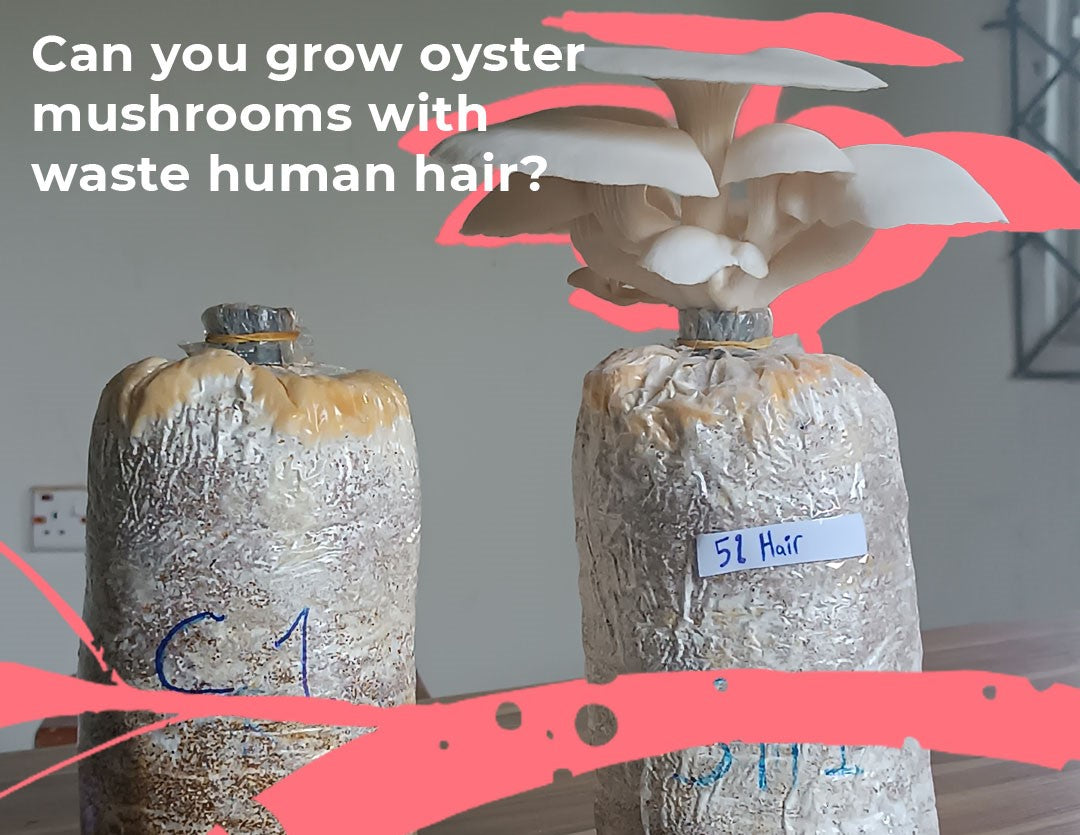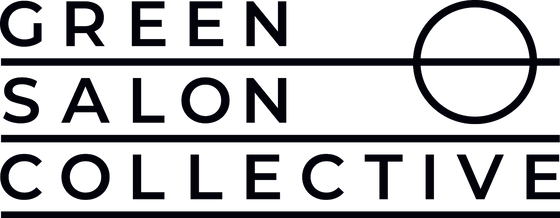
Can You Grow Oyster Mushrooms With Waste Human Hair? We Think So!
At Green Salon Collective, we’re always looking for new and innovative ways to use human hair waste to prevent it from going to landfill. That’s why a particularly unique project from Nigerian born Osarode Stephen Odemwingie caught our eye! Osarode is a masters student, innovator and photographer who’s been experimenting with growing mushrooms using hair waste. Keep
reading to learn more...
Tell us more about your work, and what made you interested in using waste human hair?
My Project is on the availability of human hair waste fibre as nitrogen supplement for growing mushrooms. Oyster Mushrooms grow on a variety of substrates, so I decided to test the suitability of pulverised human hair waste fibre for mushroom production.
My Lecturerland supervisor, Dr.Ify Obuekwe advised me to look for a novel and interesting topic. So, one day, in a barber shop, I observed that while cutting my hair, the barber swept away waste hair and put it into a waste bin, together with shampoo satchets. I asked him what he’ll do with the binned items and he said he will "throw them away and burn them". That sent a series
of thoughts through my mind...

Why is hair thrown away?
Why is hair not separated from other waste streams?
This led me to a point where I decided to investigate the properties of human hair and the power of mycelium. I found out that mycelium web can run over different types of substrates, from wood, to paper, leaves, and even petroleum products.
Talk us through the steps you took to start your research?
I decided to try using human hair as a substrate, together with saw dust. The sawdust supplies the lignocellulose, and the hair supplies the nitrogen as well as sulphur and a host of other elements common to human hair.
For this project, I took human hair waste fibre to a mill, where it was pulverised to dust (using a mask to work). The pulverised human hair fibre is fine and broken down. This will make it accessible to microbial attack. I also added calcium hydroxide in small amounts (1 Calcium Hydroxide:10 Human hair). This was to create a slightly Alkaline environment, to aid in the breakdown of the proteins in human hair. I then mixed sawdust and Calcium Carbonate in
varying levels to create a suitable substrate for the mycelium.

Could you tell us more about the cultural challenges of collecting hair in Nigeria, and how you’ve overcome those?
Collecting hair in Nigeria is very difficult, it's essentially a taboo. Hair is seen as sacred and is believed to be used for Dark Magic and sinister arts. I faced a lot of challenges collecting hair in my city, a lot of salon owners turned my requests down, even when they typically just throw away their waste hair.
After some time, I was able to convince some barbers by showing videos of Green Salon Collective, helping them to see what was obtainable in the USA or UK. Finally, they began to open up and listen to me. However, many others continued to ignore me. It took me 8 months to gather the hair I needed (which was 3KG of human hair waste) because I only have a few salon owners who would give me their waste hair.
What do you hope to achieve through this project?
I hope to show the possibilities which exist for using keratin-based proteins in mushroom production. I also hope to create an awakening in individuals concerning the opportunities that lie in the field of recovering Keratin-based waste forms (hair & feather).
What have your results been like so far?
The results have been amazing!
I had 5 different growing treatments:
● Control - Sawdust + Rice bran (80:20) - Produced mushrooms after 54 days
● 5% hair - Sawdust + Hair (95:5) - Produced mushrooms in 43 days
● 10% hair - Sawdust + Hair (90:10) - Produced mushrooms in 59 days
● 15% hair - Sawdust + Hair (85:15) - Produced mushrooms in 62 days
● 20% hair - Sawdust + Hair (80:20) - Didn’t produce mushrooms

What’s next for your research?
Next up, I am looking to carry out the digestion of chicken feathers in potassium hydroxide and
to find a way to create a nutrient-rich solution that can be used to hydrate wood chips/sawdust.
This is to create an avenue for mushroom production from this unique form of waste keratin.
WOW! We hope that you’re as impressed as we are at Green Salon Collective with the amazing results that Osarode has produced by growing Oyster mushrooms with waste human hair. Maybe one day this can be one of our 10+ ways for reusing and recycling hair from our member salons!
Images courtesy of Osarode Stephen Odemwingie



1 comment
Mr Odemwrngie is a very passionate and dogged environmentalist. I could remember how extremely difficult it was for you to access these human hair waste. Against all odds, your result as well as findings is very impressive. " You are doing well".